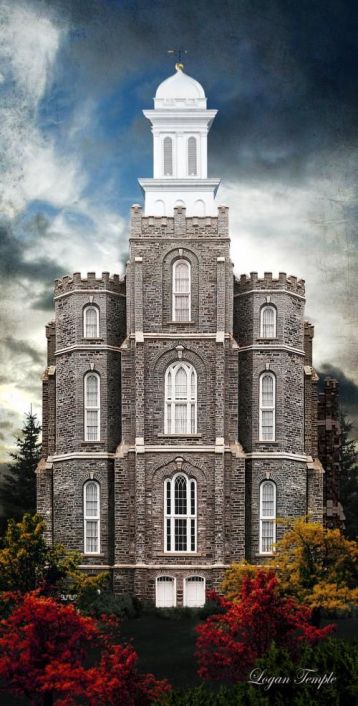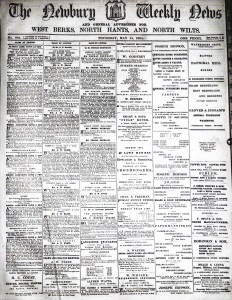The following account comes from the book “Henry Ballard, the story of a courageous pioneer 1832-1908” p. 133-137 by Douglas Crookston. This book was published in 2010 by Deseret Book.
Henry’s Miracle
In a way, Henry’s life was one of miracles. He survived in his mother’s womb despite her attempts to lose him. In his youth he survived the “Black Plague,” and was healed by Mormon missionaries. On his trip up the Mississippi River, aboard the ill-fated steamboat Saluda, Henry narrowly escaped death when the boiler blew up and killed nearly 100 people. It was only a few weeks later when his party was struck by the dreaded cholera. The epidemic took most of the May family, including his beloved Elizabeth. Henry himself contracted the disease, but was again spared from death.
Henry, being a very private person, never tried to draw attention to himself. Surely he recognized the miracles in his life, but for reasons known only to himself, he chose to remain silent about the one we will examine here. An excellent account of it is found in the book, Melvin J. Ballard, Crusader for Righteousness, beginning on page 13. It was authored by Henry’s grandson, Melvin R. Ballard, and is reproduced here with full permission of the family.
It was in the 1880’s, when Henry and Margaret had been married about twenty-three years, that an event occurred which has become something of a classic among the many accounts of miracles in the Church—of divine intervention in the affairs of men.
About 1883, a writer vacationing in Berkshire, England, was led by fancy (or was it a higher inspiration?) to visit churches and churchyards and copy from the inscriptions on the monuments and headstones the “quaint verses” and other detail which struck him “as of general interest and worthy of preservation.” The first visit made on this unusual vacation was to the ancient church at Thatcham—the birthplace, half a century before, of Henry Ballard. He later sent the notes of this visit with a prefatory paragraph or two, to the Newbury Weekly News, a newspaper founded in 1867, which published the items under the pseudonym “Wanderer.”
No one took vacations in 1883 in Logan, Utah. That small city, only a little over twenty years old, hummed with industry and suppressed excitement as its temple neared completion. The Ballards had a big stake in the temple. Henry had hauled the first load of sand for construction in July 1877, a couple of months after the site was dedicated, and throughout the entire construction period he had worked long and faithfully on this labor of love. The whole family had made many sacrifices to further the work.
 As well as temple building, temple work for the dead was a vital concern to Henry Ballard. Ever since arriving in Utah in 1852 he had diligently and anxiously sought information about his relatives in England, but apart from the knowledge that his three brothers had died he had learned almost nothing. As the dedication date for the temple drew near the family offered, with increased fervor, their oft-repeated supplication for the Lord’s help in gaining information about his dead kindred. With such information they would be able to perform the saving Gospel ordinances for them in the temple now on their doorstep.
As well as temple building, temple work for the dead was a vital concern to Henry Ballard. Ever since arriving in Utah in 1852 he had diligently and anxiously sought information about his relatives in England, but apart from the knowledge that his three brothers had died he had learned almost nothing. As the dedication date for the temple drew near the family offered, with increased fervor, their oft-repeated supplication for the Lord’s help in gaining information about his dead kindred. With such information they would be able to perform the saving Gospel ordinances for them in the temple now on their doorstep.
At last the day of dedication arrived—May 17, 1884. The temple was crowded to capacity as the venerable prophet, President John Taylor, led the sacred services and stirred all hearts with his dedicatory prayer. Recognizing the faith of the members in the area, and wishing to spread wider the sweet spirit of the services, President Taylor arranged for another dedicatory session on Sunday, the 18th, which all worthy members who so desired might attend.
The 18th found a line of members outside Bishop Henry Ballard’s home as he wrote recommends for his ward members. 1 The day was warm and pleasant, and Ellen, Henry’s nine-year-old daughter, was chatting with friends on the sidewalk outside the house when two elderly men approached, walking in the middle of the street. One of the men called, “Come here, little girl.” As Ellen hesitated, the stranger pointed to her and said, “I mean you.” Placing a newspaper in her hand, he said: “Take this to your father. Give it to no one else. Go quickly and don’t lose it.”
Henry’s wife, Margaret, now picks up the story. “Ellen came in and asked for her father. I told her that her father was busy [writing recommends] and asked her to give me the newspaper she had in her hand so that I might give it to him. She said, ‘No, the man who gave the paper to me told me to give it to no one but Father.’ I let the child take the paper to her father.”
Henry quickly took in the situation. The newspaper was the Newbury Weekly News containing “Wanderer’s” jottings from Thatcham churchyard—names and other genealogical details for sixty or so now-dead acquaintances of Henry and his father. Who had brought it? Rapidly quizzing Ellen he hurried outside, went around the block searching and questioning. In that sparsely settled community, where all the inhabitants were known to each other, no neighbors had seen the two strangers. They were never found. This disappearance of the messengers was itself cause enough to wonder, but perhaps even more impressive was the date on the newspaper—May 15, 1884. In an era long before the advent of air transportation and when mail took several weeks to get from England to western America, this newspaper had made the journey in three days!
The next day Bishop Ballard took the newspaper and recited the facts to President Merrill, president of the Logan Temple, who concluded: “Brother Ballard, someone on the other side is anxious for their work to be done and they knew that you would do it if this paper got in your hands. It is for you to do the work, for you received the paper through messengers of the Lord.” To their great joy, the Ballards received baptism and endowment in the temple for all the people he had listed. “Wanderer” never knew, in this life, the great work his vacation ramblings had made possible. Henry was then unaware of what subsequent generations have discovered—that some of the listed names link with Ballard family genealogy.
The Ballard family have always accepted with complete assurance that this incident occurred as recorded and that it reflects the hand of the Lord. Indeed, Henry’s daughter, Rebecca Ballard Cardon, who was six when the event occurred, is alive today (1966) and recalls the circumstances clearly, as well as the local knowledge of the matter and the testimonies she heard in her mature years from people who were at the Ballard home when the newspaper was received. Rebecca’s sister, Myrtle Ballard Shurtliff, has similar recollections. But sometimes rationalizers have tended to question—for instance, perhaps the newspaper was postdated. Consequently, the family made checks. Miracles cannot always be documented—but this one is. The following facts emerge in summary:
A representative of the family visited the office of the Newbury Weekly News in 1948, and saw and handled that office’s copy of the issue of May 15, 1884. The entire issue was then photographed on the spot and a signed statement completed certifying that it was copied at its place of publication in England. Comparison reveals that the photographed copy is identical with the copy handed to Henry Ballard on May 18, 1884, which now rests in the Church Historian’s Library in Salt Lake City.
At the 1948 interview the Publisher, Mr. Ashley Turner, affirmed to the family representative before several witnesses that the newspaper had never been postdated—it had always been printed on Wednesday night and distributed on Thursday morning of every week.
By official Somerset House records the family confirmed the death of a prominent citizen recorded on the same page as “Wanderer’s” article, as May 8, 1884. Bells [that] rang in the parish church “last Sunday,” as the death notice states, must have been rung on May 11, only seven days before the newspaper was delivered in Western America. The point is conclusive.
Small wonder that the newspaper, now yellowed and somewhat ragged with age, has always been regarded as a sacred treasure by the Ballard family. 2
The “representative of the family” mentioned is Henry’s great-grandson, Elder M. Russell Ballard, an Apostle of the Lord Jesus Christ. In a recent interview he recounted the event to the author.

As a young man I was serving a mission in England for the LDS Church. At an appropriate time I asked the mission president for permission to go to the office of the Newbury Weekly News, telling him why it was important that I go. Permission was granted, and I soon found my way to the desk of Mr. Ashley Turner, then the publisher of the Weekly. I explained to him that I wanted to see the original copy of the May 15, 1884, issue of the paper. He offered a variety of reasons why he could not accommodate me, and was ready to dismiss me without granting my request.
Saddened, but determined, I told him the story behind the reason for my request, and I then bore powerful testimony to him of the truthfulness of it. At that moment all of the aforementioned reasons seemed to melt away as he led me to the archives. The issue was located, and Mr. Turner allowed me to photograph it for my family and any other interested parties. What a thrill it was to be able to verify that which I already knew to be true!
Notes
- See entries: May 18-19, p. 130.
- According to his daughters this newspaper was held as a sacred gift, and as long as he lived Henry kept it folded and pressed between the pages of his temple record, under lock, in his desk. It was not talked of by him, except on rare occasions, to his own family.
